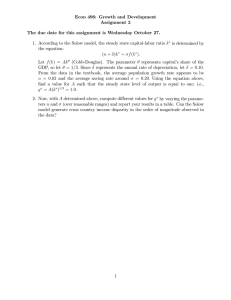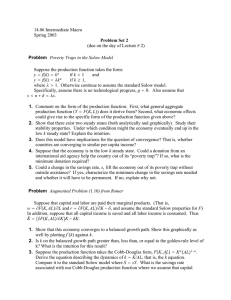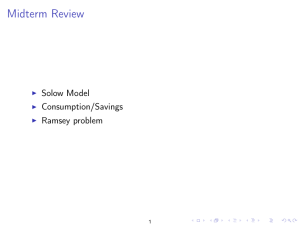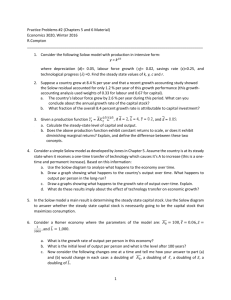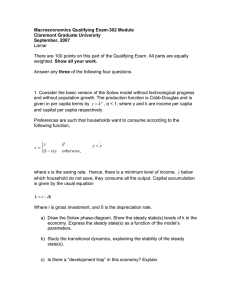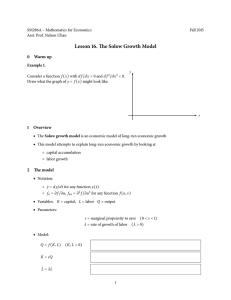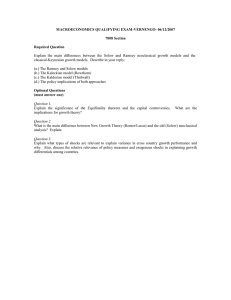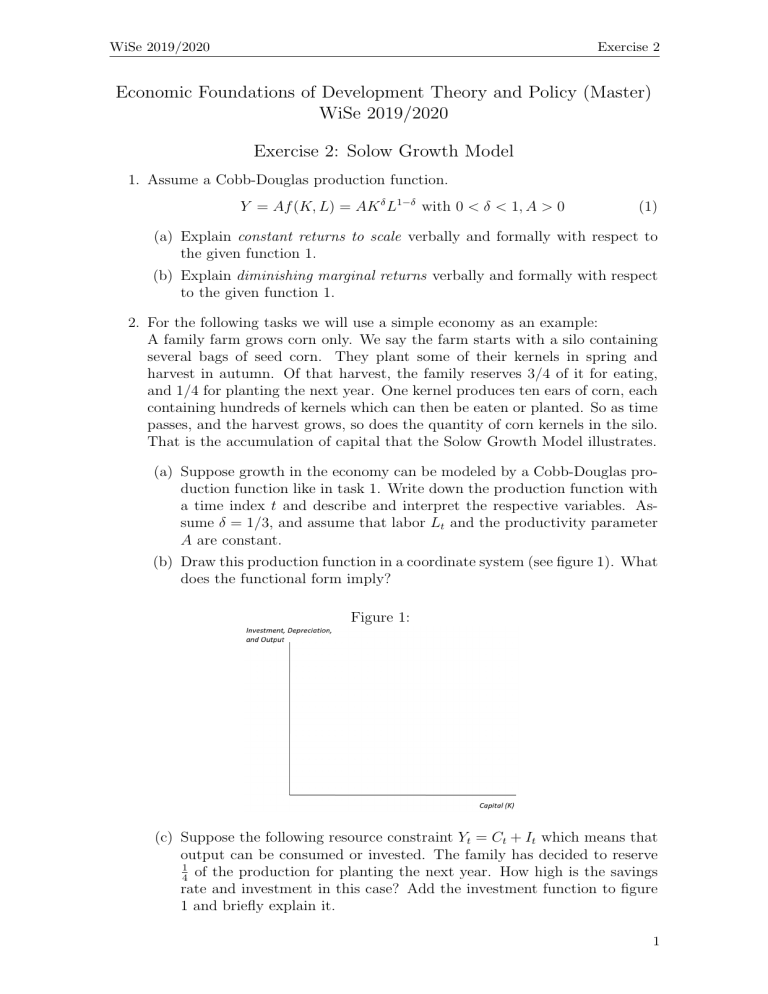
WiSe 2019/2020 Exercise 2 Economic Foundations of Development Theory and Policy (Master) WiSe 2019/2020 Exercise 2: Solow Growth Model 1. Assume a Cobb-Douglas production function. Y = Af (K, L) = AK δ L1−δ with 0 < δ < 1, A > 0 (1) (a) Explain constant returns to scale verbally and formally with respect to the given function 1. (b) Explain diminishing marginal returns verbally and formally with respect to the given function 1. 2. For the following tasks we will use a simple economy as an example: A family farm grows corn only. We say the farm starts with a silo containing several bags of seed corn. They plant some of their kernels in spring and harvest in autumn. Of that harvest, the family reserves 3/4 of it for eating, and 1/4 for planting the next year. One kernel produces ten ears of corn, each containing hundreds of kernels which can then be eaten or planted. So as time passes, and the harvest grows, so does the quantity of corn kernels in the silo. That is the accumulation of capital that the Solow Growth Model illustrates. (a) Suppose growth in the economy can be modeled by a Cobb-Douglas production function like in task 1. Write down the production function with a time index t and describe and interpret the respective variables. Assume δ = 1/3, and assume that labor Lt and the productivity parameter A are constant. (b) Draw this production function in a coordinate system (see figure 1). What does the functional form imply? Figure 1: (c) Suppose the following resource constraint Yt = Ct + It which means that output can be consumed or invested. The family has decided to reserve 1 of the production for planting the next year. How high is the savings 4 rate and investment in this case? Add the investment function to figure 1 and briefly explain it. 1 WiSe 2019/2020 Exercise 2 (d) Write down the capital accumulation function under the assumption that a certain constant percentage amount d of the capital stock depreciates. (e) Add the depreciation function into figure 1. (f) Explain how and at which point in the figure the steady state of the Solow Model is reached. Mark the output level Y and the capital stock K in the steady-state with a star. (g) Suppose the savings rate s increases. Show the new steady state in the graph. Compare the new level of output and capital with the level before the increase in s. (h) Suppose the depreciation rate d increases. Show the new steady state in a separate graph. Compare the new level of output and capital with the level before the increase in d. (i) Suppose the economy has reached the steady state and that the labour force remains constant. How can the economy still grow in this case? What are reasonable implications from the model for developing economies who want to increase their GDP per capita? (j) Based on the tasks above, fill out the following table. Production function: Capital accumulation: Labour force: Resource constraint: Allocation of resources: Table 1: The Solow Model - 5 Equations (k) One major difference between the Harrod-Domar model and the Solow model concerns the capital-output ratio. Show briefly with the CobbDouglas production function that the capital-output ratio is not necessarily constant in the model over time. When is the capital-output ratio in the model constant if we assume that Lt and A are constant? References: Jones, Charles I. 2018. Macroeconomics. Edition 4. International Student Edition. New York: W. W. Norton & Company. ISBN: 978-0-393-60376-7. 2
